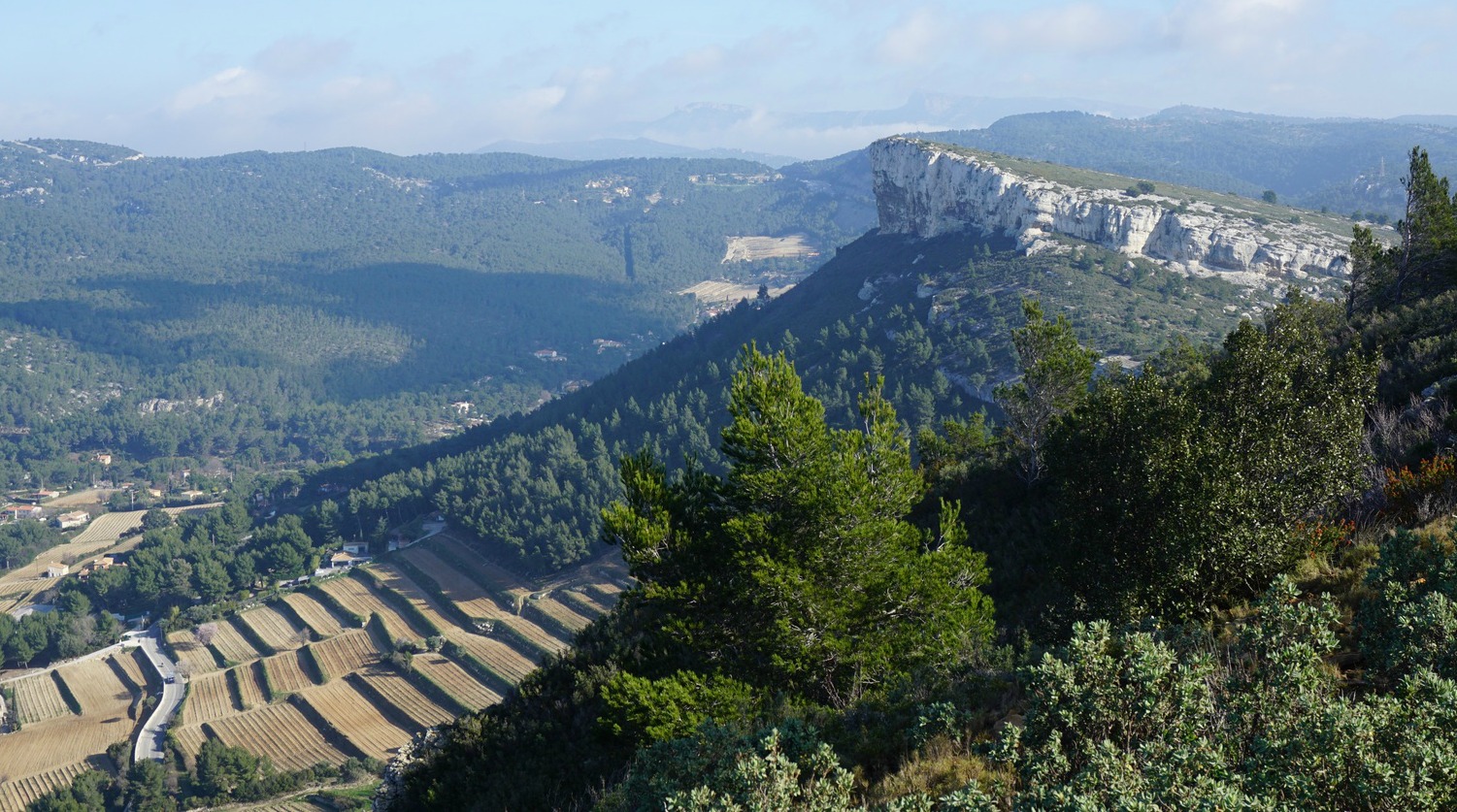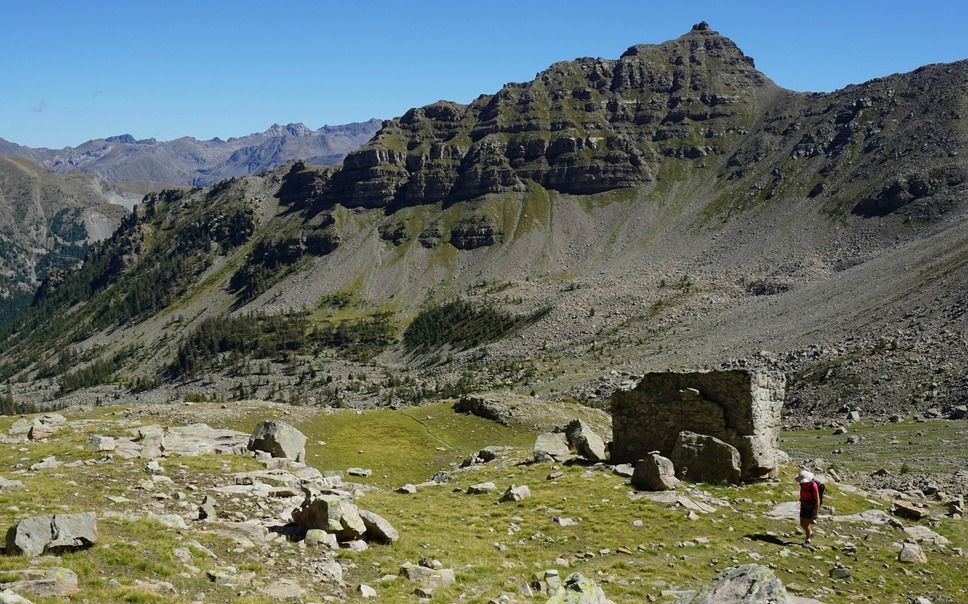La Couronne de Charlemagne above Cassis

La Couronne de Charlemagne, the crown of Charles the Great, is a distinctive hilltop (329 m according to the IGN map, although our GPS recorded max 312 m) above Cassis. It reminded us of the Baous above Nice because of its form. We called it the baby Baou because of its smaller size. With some imagination, the hill may have the form of a crown, too.
Charles the Great created a large empire attaching Germany and parts of Northern Italy to France and had himself crowned the “emperor of Romans” by the Pope in 800.
On a beautiful mid-February day, we set from Pas de la Colle by the Route des Crêtes (D141) towards Couronne de Charlemagne. If you start from Cassis, you have to walk along the streets and roads initially. We had hiked over 17km in the Calanques the day before, and thought a shorter walk would suffice today. We got inspiration for this hike from a French hiking book Le Rando Malin. La Provence des Calanques au Luberon by Claudine Francini (Mémoires Millénaires Editions).
From Pas de la Colle (parking by the road), we first walked uphill along the D141A road following the GR51 itinerary little over one km, where the road ended near the top of Baou de la Saoupe. We continued along a good and wide trail (still GR51) heading north. The trail descended a bit to Pas de Julien before starting to ascend to Couronne de Charlemagne that was all the time well visible in front of us. The trail was easy and the ascent short.
The view down to Cassis was great in spite of some maritime low clouds emerging from the sea. Some of the Cassis vineyards were just below us. The trail continued east, descending gently. We were above the railway tunnel and one of the tunnel’s ventilation shafts soon came visible. Here, we forked right (south) leaving the GR trail. There were no signposts nor markings, but it was easy to follow the wide trail, and we walked past the next two ventilation shafts leaving them on our left side. We continued south till we reached a crossroads where we forked sharply right (west) to Vallon de la Bécasse along another dirt track, and soon came back to our starting point at Pas de la Colle.
Duration: 1H 50
Climb: 259 m
Distance: 7 km
Map IGN: 3245 ET














































0 comments:
Note: only a member of this blog may post a comment.